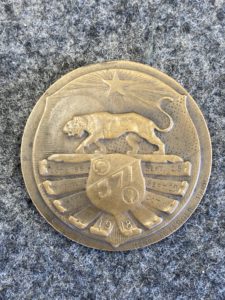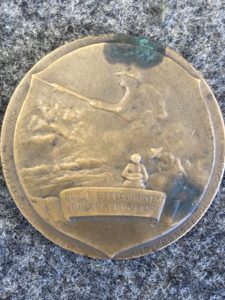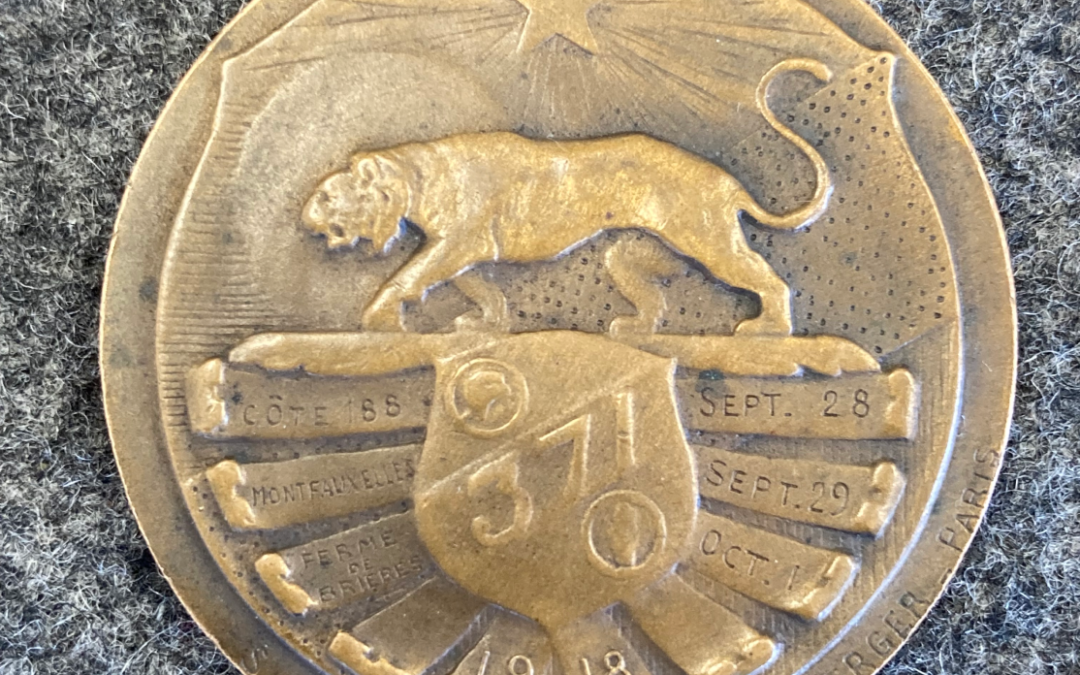July was a difficult month for the shop. I lost a week to vacation and was not able to pick up many neat things at the one show I was able to attend. In August, I plan to attend the big outdoor market in What Cheer, Iowa and will report next month on my efforts. Walk-ins to my shop have been slow as well. However, I did have a very nice item come in my store that was found in a Joplin house cleaning.
371st Infantry Regiment
It is a WWI bronze coin given by the French to Soldiers of the 371st Infantry Regiment. The 371st was a National Army Division made up of drafted farm hands from South Carolina. The enlisted Soldiers were black, and the officers were white. It was raised on August 16, 1917 and initially named the 1st Provisional Infantry Regiment. While based at Camp Jackson it was renamed the 371st Infantry Regiment. The regiment departed for France on April 9, 1918 and disembarked at Brest on April 23 where the commander Colonel P.L. Miles learned that he would be detached to a French division. The regiment was sent to Rembercourt some 30 kilometers from Verdun for a period of training. The greatest obstacle they faced were learning the French orders.
The regiment received its baptism of fire at Vassieres from concentrated German artillery fire and remained there until September 14. On the 27th they took part in the Allied Offensive in the Champagne region. Fighting continuously until October 4th, the men of the 371st wrote the finest pages of their regimental history. Out of a complement of 2,384 men the regiment suffered 105 killed, 10 died from wounds 907 were wounded. Altogether 1,052 casualties not quite 50% in less than one week of combat. The unit received 103 Croix de Guerres, one Legion d’Honneur and 21 Distinguished Service Crosses. The 371st left Brest on February 3rd, 1919, and arrived at Camp Upton, N.Y. on February 11th then later the majority were discharged at Camp Jackson, South Carolina.


Fewer than 2,000 of these coins were awarded to the Soldiers by the French Army that greatly appreciated their service. The great mystery is how this coin made its way to a house in Joplin, Missouri where it was found over 100 years later.
